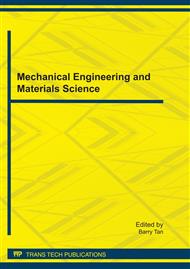p.238
p.244
p.251
p.257
p.262
p.269
p.274
p.282
p.289
Impact of Land-Use Change on Carbon Stocks in Meadow Steppe of Northeast China
Abstract:
An improved understanding of changes in carbon storage of terrestrial ecosystems is very important for assessing the impacts of increasing atmospheric CO2 concentration and climate change on the terrestrial biosphere. Accurately predicting terrestrial carbon (C) storage requires understanding the carbon stock, because it helps us understand how ecosystems would respond to natural and anthropogenic disturbances under different management strategies. We investigated organic C storage in aboveground biomass, litter, roots, and soil organic matter (SOM) in five land-use types (i.e. artificial pasture, AP; natural meadow, NM; corn plantation, CP; temperate savanna, TS; and bush wood, BW) in meadow steppe of Northeast China. The primary objective of this study was to ascertain the impact of different land-use types on the carbon stock. The total C storage (including C stored in aboveground biomass, litter, roots, and 0–100-cm soil layers) did not significantly differ between one and another type among the five pairs (P>0.05), with the exception of AP2-BW pair. The total C storage changes in value varying from 5958.09 g C m-2 for plot NM2 to 11922.87 g C m-2 for plot CP1. The C stored in the aboveground biomass was less than 1177.96 g C m-2, accounting for negligible amounts (<1% of the total) of total C storage in the ecosystem except corn plantation. The amount of C stored in SOM accounted for less than 85% of the total C storage in TS, AP2, and NM3, and the C stored in litter was very low (<1.5%), compared to other pools in the ecosystem. The amount of C stored in the roots varied from 0 g C m-2 for plot BW, CP1, and CP2 to 2032.32 g C m-2 for plot NM3, and it accounted for less than 20% of C storage in the grassland.
Info:
Periodical:
Pages:
262-268
Citation:
Online since:
October 2011
Authors:
Keywords:
Price:
Сopyright:
© 2012 Trans Tech Publications Ltd. All Rights Reserved
Share:
Citation:


